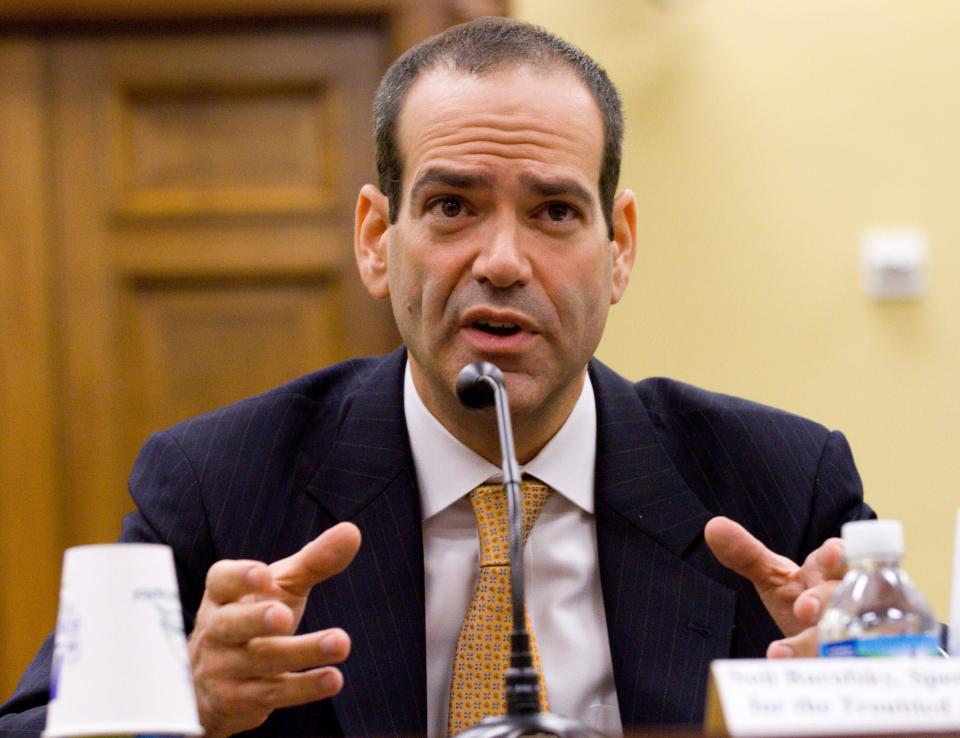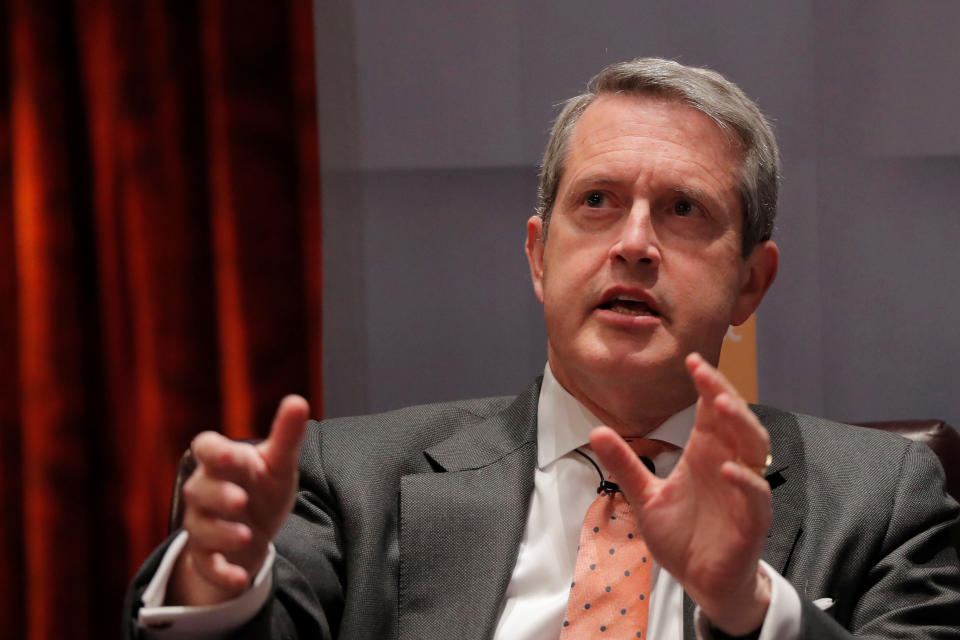Former TARP watchdog: 'No question' that banks will need another bailout
A key figure in the financial crisis is not convinced that the U.S. government has fixed its “too big to fail” problem.
Neil Barofsky oversaw the $700 billion Troubled Asset Relief Program and expressed concern over efforts in Washington to roll back capital requirements on the largest banks.
“If we have another crisis, there’s no question in my mind that we have to bail them out again,” said Barofsky, now a lawyer at Jenner & Block.
Barofsky told Yahoo Finance that the largest banks have only gotten larger and more interconnected than they were before the crisis. In 2007, JPMorgan Chase (JPM), Citigroup (C), and Bank of America (BAC) held a total of $5.46 trillion in total assets. In 2019, those same three banks now hold $6.89 trillion.

All three banks took money from the TARP program and ultimately repaid the government.
Barofsky said if another crisis strikes, the sheer size of these banks — in addition to regulatory rollbacks on capital requirements — would inevitably force the government into another bailout.
“When you’re looking at the precipice of potentially another Great Depression, who’s going to roll that dice and allow one of these institutions to fail and risk the domino effect we saw when Lehman [Brothers] went? When AIG started to go?”
‘Huge historical mistake’
Barofsky said the best protection against a crisis — and by extension, another monumental bailout program — is forcing the banks to hold more capital. Bank regulators have a variety of ways to measure bank capital, but more broadly “capital” refers to the non-liability assets that a bank can rely on to absorb losses (i.e. cash, retained earnings).
After the financial crisis, Congress passed the Dodd-Frank financial regulatory framework that imposed stringent capital requirements on the banking industry. Also among the new requirements: supervisory powers over non-financial systemically important firms like AIG and Prudential (PRU), in addition to periodic “stress tests” that emulate a crisis on a bank’s balance sheet.
Barofsky worries that the Trump administration is actively trying to pare back those rules. In May 2018, Republicans and a number of moderate Democrats passed a package bill that pared back some regulatory requirements on regional banks between $50 billion and $250 billion in size. Trump signed the bill and declared Dodd-Frank a “disaster.”
Barofsky says these efforts expose the banks to another crisis.
“We’re making a huge historical mistake right now,” Barofsky told Yahoo Finance, adding later that, “we really are just repeating the same exact mistakes that led us into the last crisis once again.”

The Federal Reserve is currently in an effort to “tailor” bank capital requirements on some of the larger banks through a stress capital buffer and a tweak to leverage ratio calculations, as part of an effort led by Trump-appointee, Federal Reserve Vice Chairman Randal Quarles.
The proposals are expected to result in lower capital requirements for the banks but there is disagreement as to how substantial the changes will be.
Barofsky said other regulatory actions, just in the last two weeks, also have him scratching his head.
In that time, the Federal Reserve implemented a number of regulatory tweaks, one of which reduces the use of “qualitative” stress tests that assess the operational or risk management protocols at a given firm. The Financial Stability Oversight Council, led by Treasury Secretary Steven Mnuchin, also tightened the criteria for declaring a non-bank company as “systemically important.” Prudential, the last of the four companies to face extra scrutiny as a “systemically important” company, had its label removed by the FSOC in October of last year.
Many of the Trump-appointed regulators have argued that some of the post-crisis regulations went too far and ended up constraining the banking industry’s ability to lend.
Fed Chairman Jerome Powell also has no qualms about existing levels of bank capital. Powell told “60 Minutes” on Sunday that the largest banks have double or more the amount of capital than they did pre-crisis, which makes the system “much stronger and more resilient.”
Barofsky agrees that banks are in a better place now, but cautioned that declaring banks “safer” now is “not necessarily the same as saying we’re in a safe place.” He reiterated that high levels of bank capital are the best safeguard.
Brian Cheung is a reporter covering the banking industry and the intersection of finance and policy for Yahoo Finance. You can follow him on Twitter @bcheungz.
Read more:
Fed Chair Powell says ‘No,’ President Trump cannot fire him
The bull market is almost 10 – here are some facts and figures
NY Fed's Williams on the outlook for monetary policy: 'It depends'
Larry Summers: Modern Monetary Theory is 'grotesque'
Congress may have accidentally freed nearly all banks from the Volcker Rule

 Yahoo Finance
Yahoo Finance 
